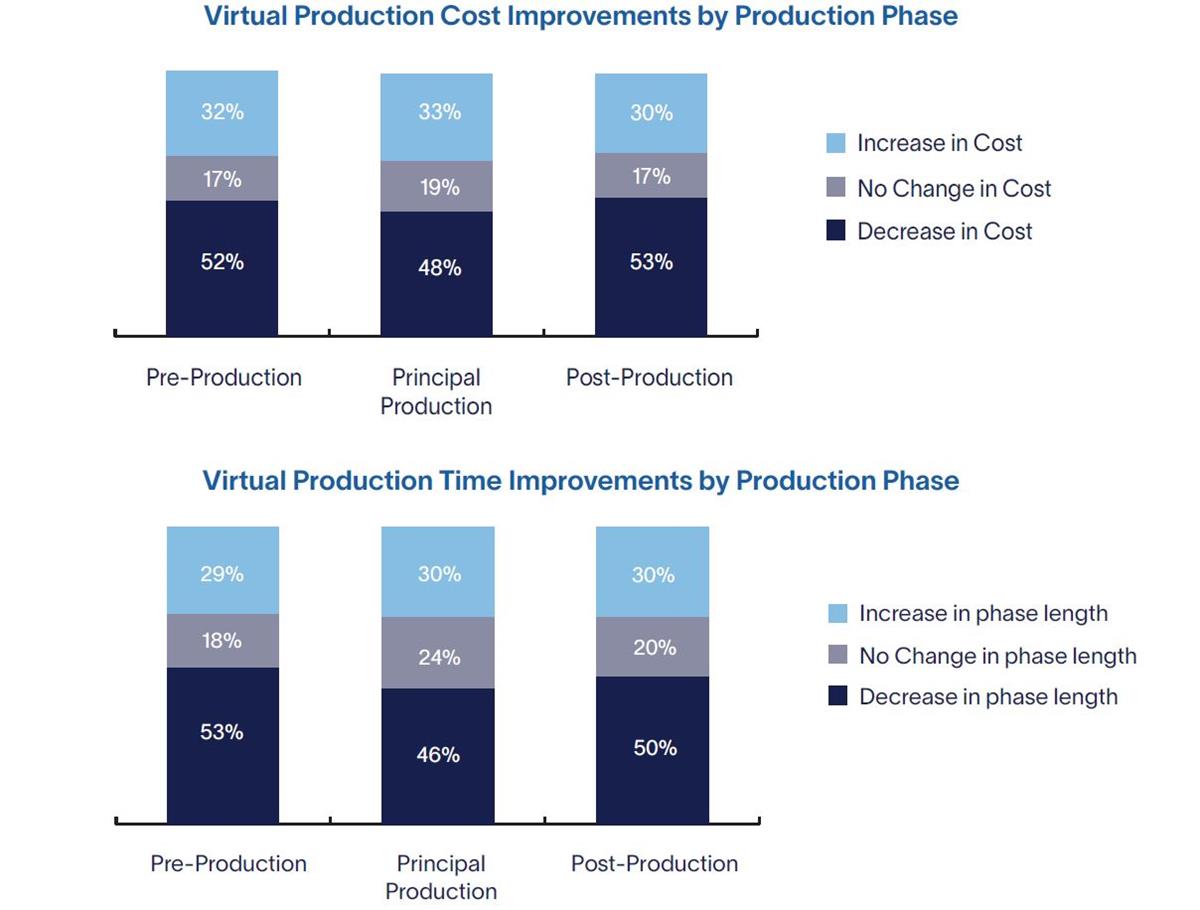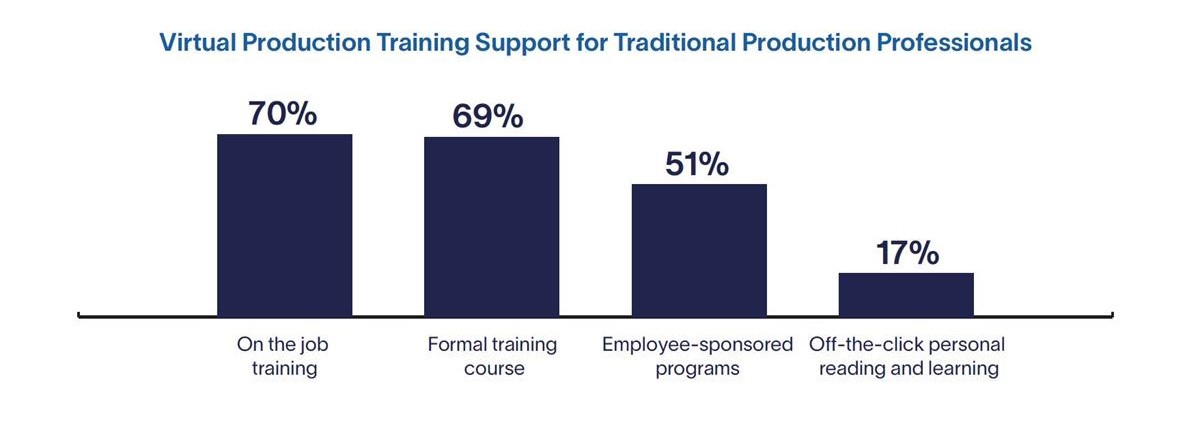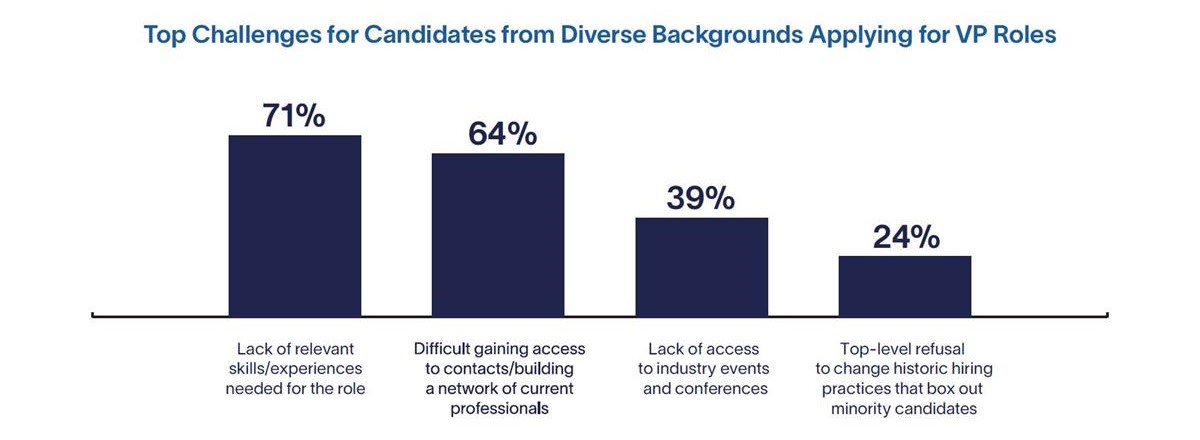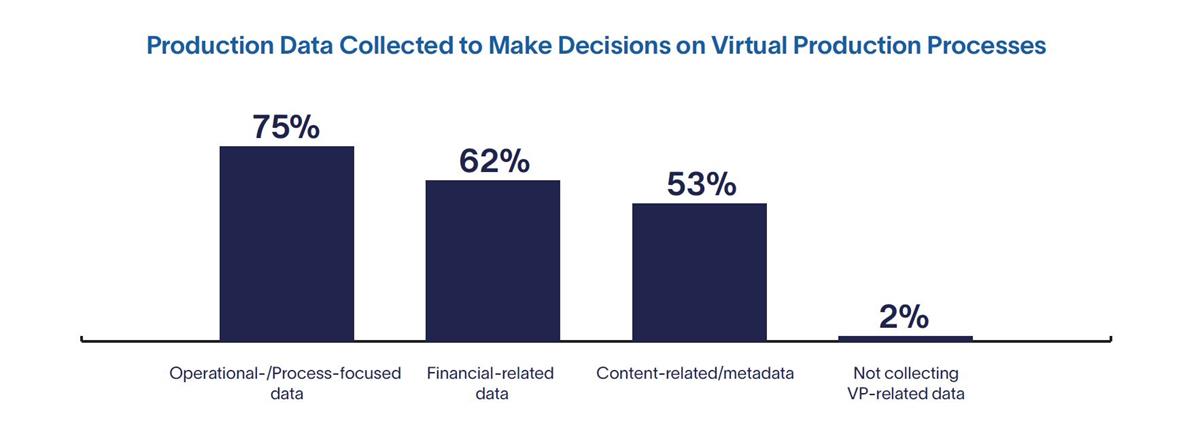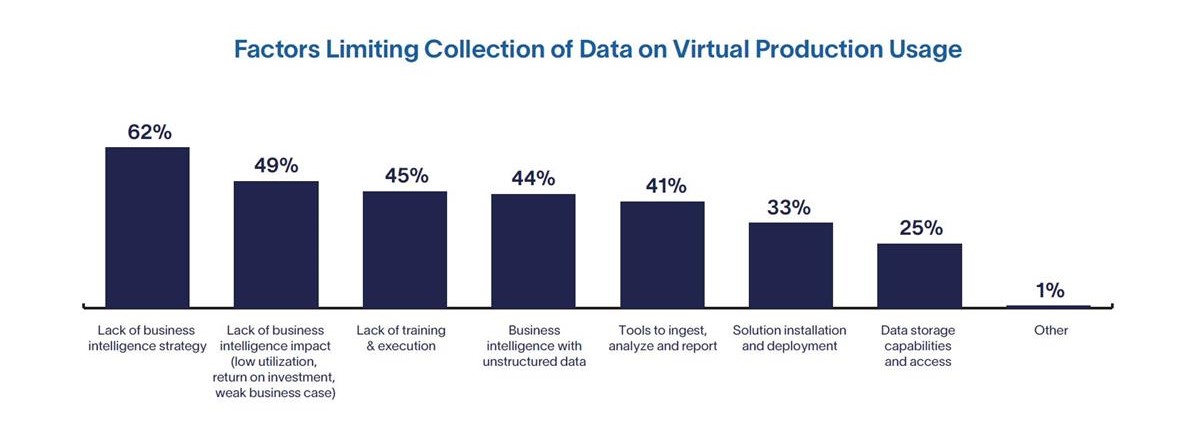TL;DR
- Altman Solon’s 2022 Global Film & Video Production Report finds virtual production is on the rise, but the industry faces challenges over sourcing talent and harnessing the power of data.
- Productions are shifting towards a data-driven approach to improve production forecasting and measure VP success.
- Virtual production is still in its early days, with widespread adoption limited to specific projects where it’s easily applicable. However, there are emerging trends around how VP is used, the impact it has on projects, and criteria used for deciding when to use it.
READ MORE: Altman Solon Report: Virtual Production Helps Filmmakers and Studios Collaborate, Meet Deadlines, & Cut Costs (Altman Solon)
Virtual production continues to gain traction across the film and TV industries, but the cost of using it remains high and talent with VP experience and training is limited, according to a new Altman Solon report.
Creatives are still be skeptical about incorporating the technologies — and the research finds there’s also a lack of sophisticated data analysis necessary to make the case for virtual production.
The consultancy’s 2022 Global Film & Video Production Report highlights VP as a growing trend in the industry, driven by the need for virtual and collaborative tools to lower production costs, improve timelines, and overcome the limitations of physical production sets.
It surveyed over 100 industry experts with more than three years of experience in virtual production and found that motion capture was the most popular VP technology, with 50% reporting they or their team have used it over the past 12 months.
The second most popular tool, cloud-based editing (48%), has gained favor among production staff because it enables remote collaboration. Three-quarters of respondents identified virtual scouting as a tool that saves money and shortens timelines. Newer technologies like in-camera VFX (42%) and virtual scouting (39%) have lower adoption rates.
Despite the popularity and effectiveness of certain tools, widespread adoption is limited to specific projects where VP is easily applicable — often projects that require many filming locations or sci-fi/fantasy productions.
For small productions, the survey found that travel budget savings can make a virtual production project more economically viable.
“While medium and small stages exist, producers of mid-tier content often lack the readiness and experience to shoot on a Tier 2 or medium stage, and one-off shoots don’t reap the benefits of shooting multiple episodes or seasons on a stage,” the report says.
There are some 84 virtual production stages in the US and another 40 in the UK, however this number also includes smaller “xR stages” used mainly for music videos or commercials, not shows or films.
The report suggests that smaller production studios with limited resources won’t be able to afford a larger stage and may opt for traditional shooting methods or green screens, rendering LED volumes less relevant for the mid- to low-budget markets.
READ IT ON AMPLIFY: A Brief Voyage Through the History of Virtual Production
READ IT ON AMPLIFY: Virtual Production: A Primer
READ IT ON AMPLIFY: LED Wall Enlightenment: What You Need to Know About ICVFX
Talent Shortage
Because virtual production is still an emerging technology, there is a shortage of talent with “hands-on” experience in the industry, creating staffing challenges for production studios. Additionally, the broader industry has historically lacked diversity in terms of race and gender, creating a talent funnel issue when trying to hire candidates of diverse backgrounds for VP-specific roles.
Instead, most respondents are now looking for candidates in adjacent industries like gaming, AR/VR, animation, automotive and transport, and architecture, among others, and through on-campus recruitment to find candidates with the necessary technical skills. Candidates from industries that use real-time gaming technology and are familiar with the workflows are desirable for VP roles.
“Virtual production is the future of global filmmaking but how and when it maximizes its potential will be determined by the industry’s ability to attract talent to this new field,” said Altman Solon director Derek Powell.
“It’s clear that the networking-heavy approach used in Hollywood for generations will not deliver the VP workforce needed now and in the future. The good news is that studios are employing new and creative recruiting techniques, including better outreach to candidates with diverse backgrounds.”
Virtual Production as Part of a Data-Driven Strategy
Because of virtual production, studios now have more access to data, opening the opportunity to gather data across the production process and run analytics to uncover insights for more informed decision-making.
That’s a change, since historically, production studios didn’t collect technical production data. VP can be used to collect and leverage production data that identifies possible efficiencies (for example, using lens metadata and lighting parameters defined in the gaming engine to make corrections in post-production). According to the report, there is potential for productions to use VP data to automate processes in post-production that in the past were done with creative teams, thus saving time and money.
However, while VP tools enable great collection of data versus traditional production methods, production teams hit roadblocks when collecting it. According to the survey, the top three limitations to collecting data are “lack of business intelligence strategy” (62%), “lack of business intelligence impact” (49%), and “lack of training and execution” (45%).
“All these inhibitors are characteristic of organizations with immature business intelligence and data strategies,” finds the consultancy — which would no doubt offer its services to assist in this regard. “This indicates that while production teams have the tools to gather and analyze data, they are still nascent in this area and slowly transitioning to be more data-driven.”
This matters most when budget forecasting, which was the top data-usage focus of VP executives surveyed. Altman Solon says: “In traditional productions, variables associated with set design, shooting, travel, and logistics can change greatly when a shooting location needs to change or if a scene needs to be reshot, which can include bringing talent and crews back to a location. For these reasons, using data to improve budget forecasting was the top-ranked selection in the survey.”
Other Issues Highlighted in the Report
Currently, there are no standard virtual production processes, and each production has its own unique process structure. Data security is also a concern for half the respondents, largely due to the use of cloud-based tools, which some users perceive as having weaker security controls than on-premises solutions. Similarly, just under 50% of respondents expressed concern over the potential for customizable workflow configurations since cloud-based tools have fewer customization capabilities.
Next, Listen to This
Epic Games’ Los Angeles Lab Director Connie Kennedy and American Cinematographer Virtual Production Editor Noah Kadner join us to talk about the confluence of practical and virtual production, and help shed some light on what virtual production actually is — and isn’t.


